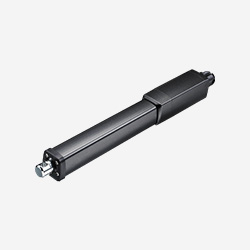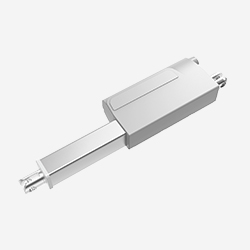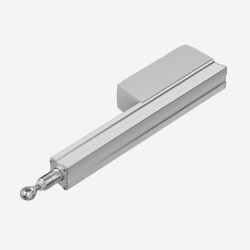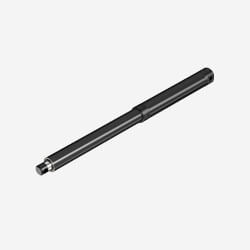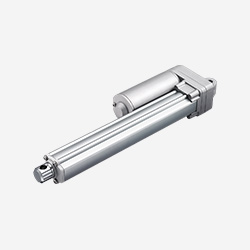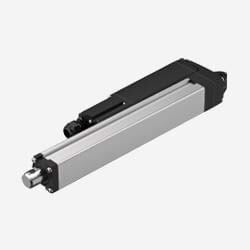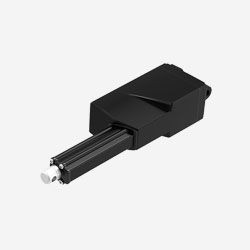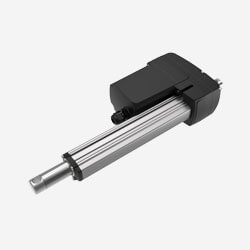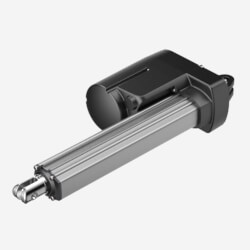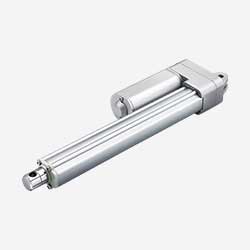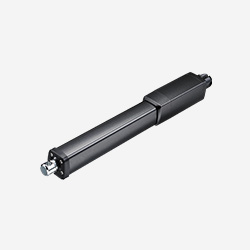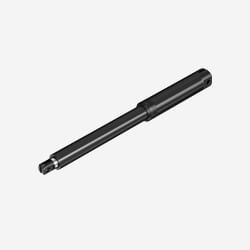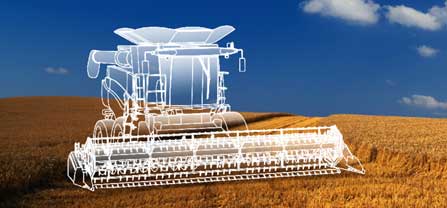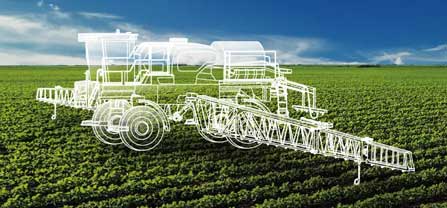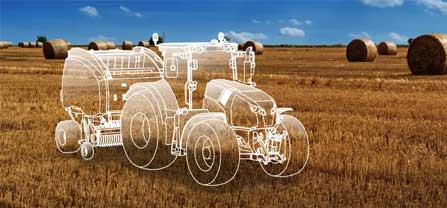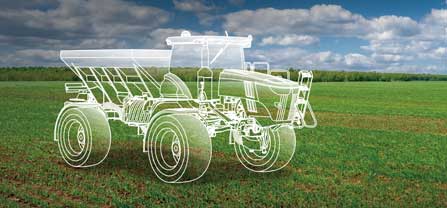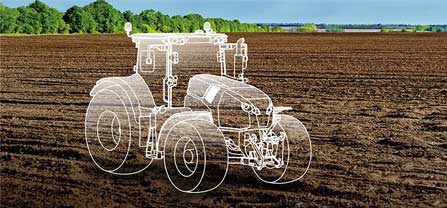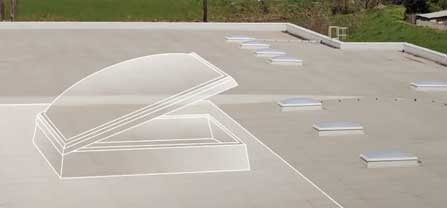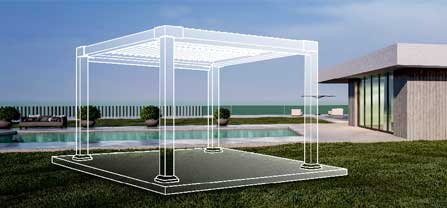2024/10/18
Actionneurs industriels TiMOTION : caractéristiques et modèles
Actualités et articles
Le rôle essentiel des actionneurs industriels dans les machines modernes
Les actionneurs industriels sont des composants essentiels des machines modernes. Ils convertissent l'énergie électrique en mouvement mécanique pour actionner divers équipements. Connus pour leur force et leur capacité de charge élevées, ces actionneurs peuvent facilement manipuler des machines et des matériaux lourds. Fabriqués à partir de matériaux durables, ils sont conçus pour résister à des environnements difficiles, garantissant ainsi une fiabilité à long terme dans les environnements industriels.
Les actionneurs industriels sont largement utilisés dans de nombreux secteurs. Dans l'automatisation des usines, ils contrôlent avec précision les bras robotiques et les systèmes de manutention, améliorant ainsi la productivité. Dans les industries lourdes, ils actionnent des vannes et des rampes de grande taille, supportant des conditions de haute pression et de haute température. Dans les secteurs de l'énergie et des infrastructures, ils ajustent les éoliennes et les panneaux solaires pour maximiser l'efficacité des transports. Ils jouent un rôle clé dans les systèmes automatisés et les ascenseurs, en assurant un fonctionnement sûr et stable.
En résumé, les actionneurs industriels sont la force motrice de la stabilité et de l'efficacité des opérations industrielles, et leurs applications continuent de s'étendre au fur et à mesure que la technologie progresse.
Capacité de force : Répondre aux exigences de la force industrielle
La capacité de force est une autre caractéristique essentielle des actionneurs linéaires, car elle détermine la force maximale qu'ils peuvent exercer. Dans les environnements industriels, la force requise peut varier considérablement en fonction de l'application :
- Applications à charge légère (<2 000 N) :
- Idéales pour des tâches telles que le contrôle de portes automatiques ou d'équipements de traitement légers, où l'actionneur doit déplacer des charges légères en douceur.
- Applications à charge moyenne (2 000 à 6 000 N) :
- Utilisées dans les machines de taille moyenne, telles que les systèmes logistiques ou les équipements de fabrication, où un équilibre entre force et efficacité est nécessaire.
- Applications pour charges lourdes (>6 000 N) :
- Conçus pour répondre aux besoins de force élevée des machines lourdes telles que les équipements miniers ou les grands bras robotisés, ces actionneurs peuvent supporter des charges importantes tout en conservant des performances constantes.
Les différentes capacités de force des actionneurs industriels leur permettent de s'adapter à un large éventail d'environnements industriels, des opérations délicates aux tâches lourdes, tout en fournissant la puissance d'entraînement nécessaire.
Vitesse : la clé d'un fonctionnement efficace
La vitesse d'un actionneur linéaire, qui détermine la rapidité avec laquelle il s'étend ou se rétracte, est essentielle pour un fonctionnement efficace. Les applications industrielles requièrent différentes vitesses en fonction de la tâche à accomplir :
- Basse vitesse (<20mm/s) :
- Mieux adaptée aux opérations de précision qui nécessitent des ajustements lents et contrôlés, comme dans les équipements d'assemblage ou de mesure, où de petits mouvements précis sont essentiels.
- Vitesse moyenne (20 à 60 mm/s) :
- Couramment utilisée dans la plupart des équipements d'automatisation industrielle, elle permet d'équilibrer la vitesse et la précision afin d'améliorer la productivité globale.
- Vitesse élevée (>60 mm/s) :
- Idéale pour les tâches exigeant une réponse rapide, telles que les lignes de production à grande vitesse ou les systèmes d'arrêt d'urgence, où des mouvements rapides et à grande échelle sont nécessaires.
La gamme de vitesses disponibles dans les actionneurs industriels garantit des performances optimales dans diverses applications industrielles, qu'il s'agisse d'ajustements lents et précis ou d'opérations rapides et efficaces.
(Pour en savoir plus : Partie 4 : Caractéristiques de charge et de vitesse d'un actionneur)
Indice de protection IP : Conçu pour les environnements difficiles
Les environnements industriels sont souvent difficiles, avec de la poussière, des liquides et d'autres éléments qui posent des défis importants. Les actionneurs linéaires industriels doivent bénéficier d'une protection robuste pour garantir une fiabilité à long terme. L'indice de protection contre les infiltrations (IP) est une mesure standard de la capacité d'un actionneur à résister à ces conditions :
- IP54 :
- Cet indice offre une protection de base contre la poussière et l'eau. Les dispositifs dotés d'un indice IP54 sont protégés contre la plupart des particules de poussière et peuvent résister à des éclaboussures d'eau provenant de toutes les directions. Ils sont couramment utilisés dans les éclairages extérieurs et les panneaux de commande industriels, où une protection modérée est nécessaire.
- IP65 :
- Les appareils classés IP65 sont totalement étanches à la poussière et résistent aux jets d'eau à basse pression provenant de n'importe quel angle. Ils sont donc idéaux pour les équipements électriques extérieurs, les éclairages architecturaux et l'électronique des véhicules qui nécessitent une forte protection contre la poussière et l'eau.
- IP66 :
- Offrant une protection accrue, les appareils conformes à la norme IP66 sont totalement étanches à la poussière et peuvent résister à des jets d'eau puissants. Ils conviennent aux environnements extérieurs difficiles ou aux machines industrielles nécessitant des nettoyages fréquents.
- IP67 :
- Les appareils dotés de l'indice IP67 sont totalement étanches à la poussière et peuvent être immergés dans l'eau jusqu'à 1 mètre de profondeur pendant au moins 30 minutes. Cet indice est parfait pour les caméras extérieures, les montres de plongée et d'autres équipements exposés à l'eau.
- IP68 :
- Les appareils classés IP68 offrent un niveau élevé de protection contre l'eau. Ils peuvent être immergés à plus d'un mètre de profondeur pendant au moins 30 minutes, ce qui les rend adaptés aux opérations en eaux profondes, aux équipements marins et aux installations industrielles constamment exposées à l'humidité.
- IP69K :
- Conçus pour des conditions extrêmes, les appareils IP69K peuvent résister à des jets d'eau à haute pression et à haute température. Cet indice est couramment utilisé dans des industries telles que l'agroalimentaire et la pharmacie, où des procédures de nettoyage rigoureuses sont requises.
Outre ces indices IP standard, certaines lettres telles que K, M et W fournissent des informations plus spécifiques sur la protection de l'appareil :
- K :
- Souvent utilisée dans l'indice IP69K, cette lettre indique que l'appareil a passé avec succès les tests de jets d'eau à haute pression et à haute température. Elle est essentielle pour les applications dans des environnements qui nécessitent des nettoyages fréquents et minutieux.
- M :
- Cette lettre signifie que l'appareil a été testé en mouvement, notamment lors de tests d'immersion dans l'eau. Elle garantit que les équipements tels que les robots sous-marins ou les embarcations en mouvement peuvent maintenir leur résistance à l'eau même lorsqu'ils sont en mouvement.
- W :
- Indique que l'appareil est adapté à des conditions météorologiques spécifiques, en particulier dans des environnements extrêmes tels que des pluies torrentielles ou des tempêtes. Les indices IP avec une désignation W sont idéaux pour les équipements extérieurs exposés à des conditions climatiques difficiles.
Ces désignations supplémentaires dans les indices IP garantissent que les actionneurs linéaires peuvent fonctionner de manière fiable dans un large éventail de conditions difficiles, prolongeant ainsi la durée de vie de l'équipement qu'ils alimentent.
Retour d'information sur la position et fonctions d'auto-verrouillage : Améliorer la fiabilité
De nombreux actionneurs linéaires industriels sont équipés de systèmes de retour de position intégrés, tels que des potentiomètres ou des capteurs à effet Hall, qui fournissent des données de position précises, garantissant ainsi un mouvement exact. En outre, certains actionneurs sont dotés de mécanismes d'auto-verrouillage qui maintiennent leur position même en cas de coupure de courant, ce qui est crucial pour les applications qui exigent une stabilité et une précision à long terme.
(Lire la suite : Partie 6 : Actionneurs linéaires électriques avec capteurs de rétroaction)
Applications typiques des actionneurs industriels : De l'assemblage minutieux aux opérations lourdes
La polyvalence des actionneurs linéaires, avec leur large éventail de spécifications et de conceptions, les rend adaptés à une grande variété d'applications industrielles. Par exemple, dans les chaînes d'assemblage automatisées, les actionneurs linéaires industriels contrôlent avec précision le positionnement et le mouvement des composants, assurant ainsi un assemblage efficace et précis. Dans les machines lourdes, ces actionneurs peuvent supporter des charges importantes et fournir un mouvement stable et puissant, même dans des conditions difficiles.
Actionneurs linéaires : L'épine dorsale de l'automatisation industrielle
La diversité des spécifications et des modèles d'actionneurs industriels leur permet de s'adapter à un large éventail d'applications, depuis les micro-ajustements délicats jusqu'aux opérations à haute force et à grande vitesse. En tant que composants clés des machines et des systèmes qui animent l'industrie moderne, les actionneurs linéaires restent la pierre angulaire d'une production industrielle efficace et efficiente. Renseignez-vous dès maintenant et personnalisez vos propres besoins avec TiMOTION!
Pour en savoir plus :
Avantages des actionneurs électriques dans les systèmes d'énergie renouvelable - Panneaux solaires
Les actionneurs linéaires électriques révolutionnent les systèmes de transmission des véhicules
Actionneurs électriques industriels pour les véhicules à guidage automatique

